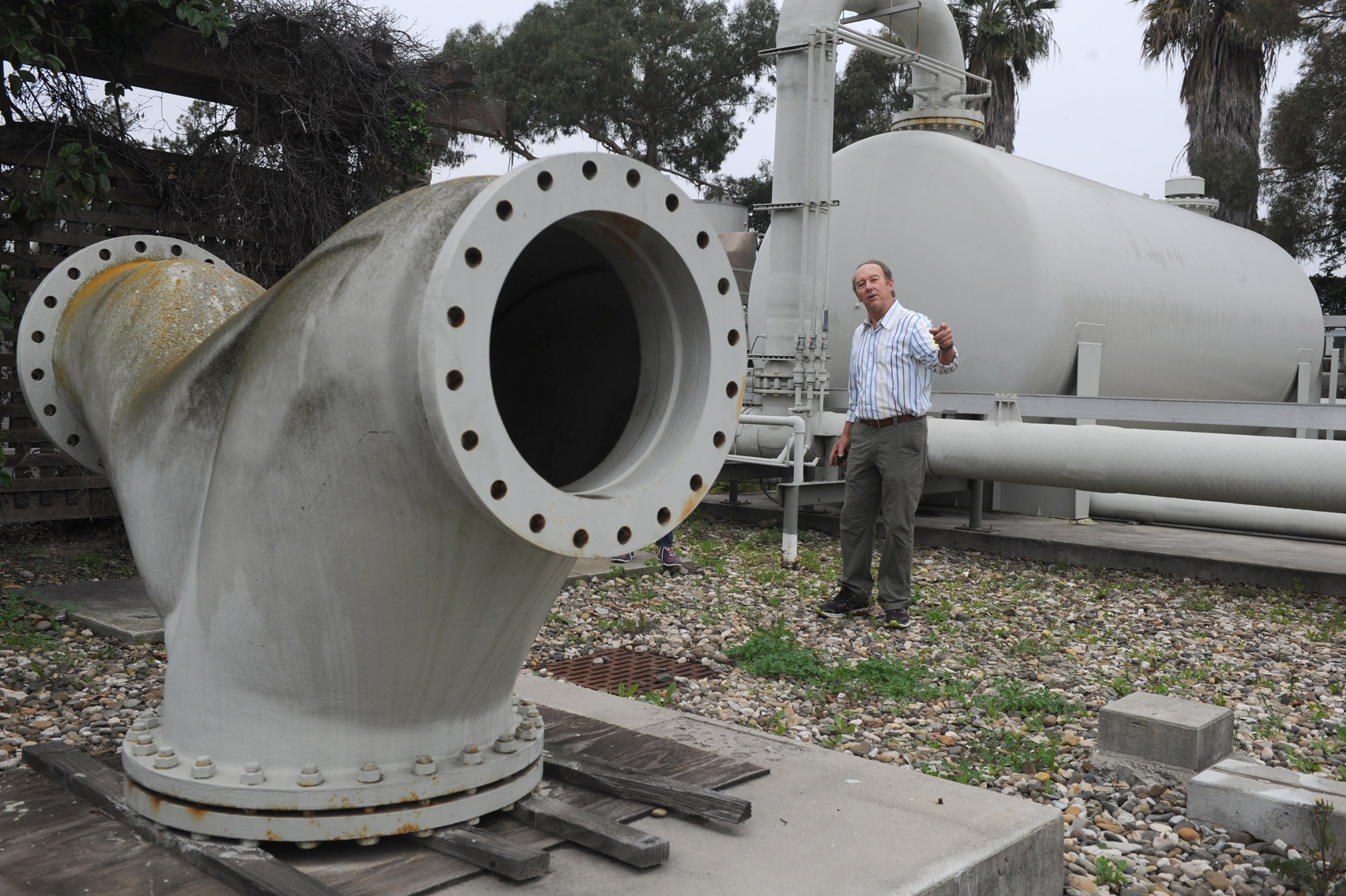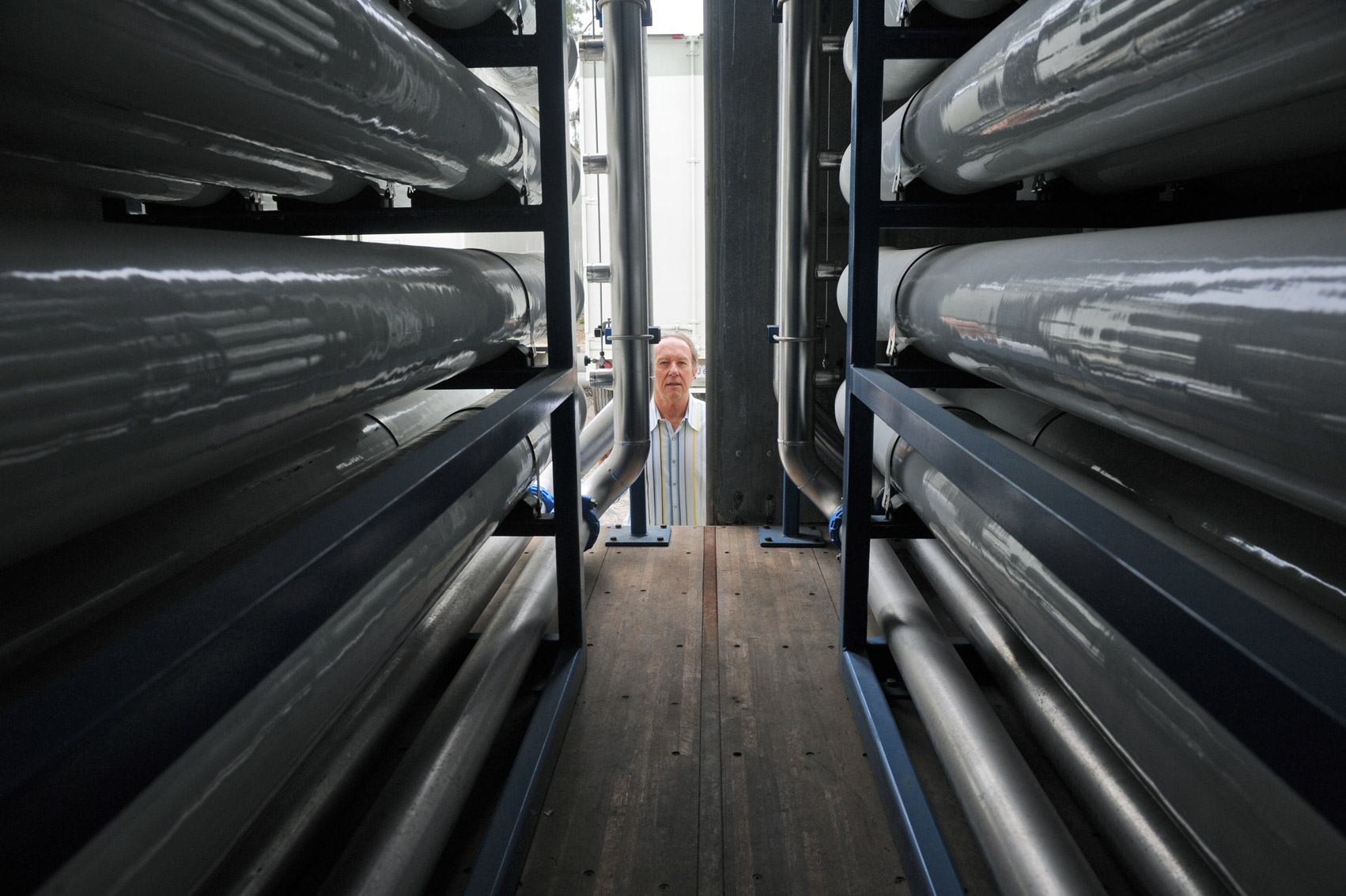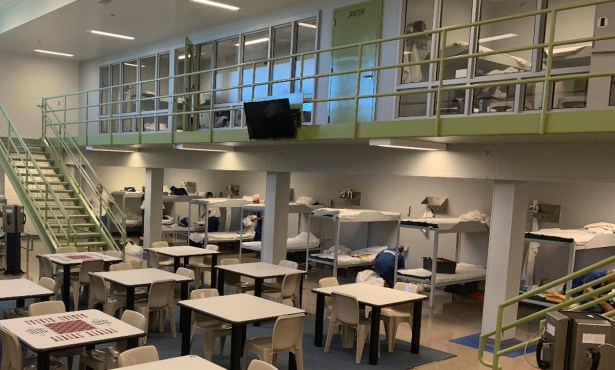Desal Goes Online, Sort Of
Soft Opening for New Plant Reveals Softer Water

There was a conspicuous absence of ribbons cut, no ceremonial bottles of water drunk, no flick of any high-powered switch to activate the throbbing membranes of Santa Barbara’s brand-spanking-new desalination plant. Instead, this much-anticipated and historic event was anticlimactically celebrated with the dispatch of a simple press release delivered via email to various news outlets.
The press release included links to photographs and videotaped interviews with Santa Barbara Mayor Helene Schneider and city water manager Joshua Haggmark. Explaining the soft opening by telephone, Haggmark said the plant had not yet completed its final regulatory hurdle for full-throttle operation but that desalinated water is now being introduced into the city’s distribution system. With the addition of the desalinated water — being added very intermittently at a rate of 2,000 gallons per minute — savvy customers might notice a difference in both taste and texture. “The water is softer,” Haggmark said. “I think it tastes nice.”
Haggmark said the new plant has passed all state and federal water-quality tests. For it to pass the final operational and regulatory hurdle and be ready for prime time, it must run for 14 days without interruption. The new desalination plant comes equipped with a complex web of computerized monitors and alarms that go off whenever pressure readings deviate. When the alarms go off, the plant is shut down, the problem is identified, and it’s started up again. Until a glitch-free, 14-day stretch is achieved, there will be no tours of the plant nor any made-for-media show-and-tells.

To the extent the completion of the desalination plant qualifies as historic, it’s a painful history and one that’s repeating itself. The City of Santa Barbara, after all, built a brand-new desalination plant in 1991 in response to the intense drought that began in 1987. That plant cost $34 million to build and was shut down shortly after it started in response to the torrential downpours of 1993. While the guts of that facility were sold off long ago, the bones remained intact. More crucially, so did its permits with various state agencies. When the adequacy of those permits survived a challenge waged on environmental grounds by Santa Barbara Channelkeeper, the project could move forward, and the City of Santa Barbara could build what’s essentially a totally new facility. Critics complained the original permits were flawed and that the plant would inflict undue ecological damage on the microscopic sea life from whence the water was pumped and also where the briny discharge of extracted salts was dumped.
The final price tag of $72 million has generated considerable sticker shock around City Hall. In 2011, city planning documents estimated it would cost $18 million to refurbish the desal plant. In 2014, the estimate was $28 million. In the intervening months it’s changed several times, always incrementally and always up. Haggmark noted that the desal plant will account for $8 million of the $50 million the city spends every year for its water. “That’s less than one-sixth of the cost for one-third of our supply,” he noted.
Until February, Lake Cachuma had been sucked down to the status of glorified mud puddle. Without a desalination plant calibrated to deliver 3,125 acre-feet a year, it was unclear there would be enough water in the system this coming summer to make deliveries to certain hilly, higher-elevation neighborhoods. (The plant’s maximum permitted capacity is 10,000 acre-feet a year. To achieve that production volume, however, would require massive additional construction and engineering work and millions more dollars spent.) Councilmembers began to show signs of serious agitation. Haggmark and other water supply planners could rest easy only after this February’s heavy rains came, filling Lake Cahuma to the halfway level.
In either of its incarnations, the desalination plant’s completion coincided with heavy rains that appeared at least to render its existence superfluous, expensive, and even extravagant. Mayor Schneider, in her videotaped remarks, took issue with that perception. “People need to recognize we’re in the new normal,” she said. “This drought is not the last one.”



